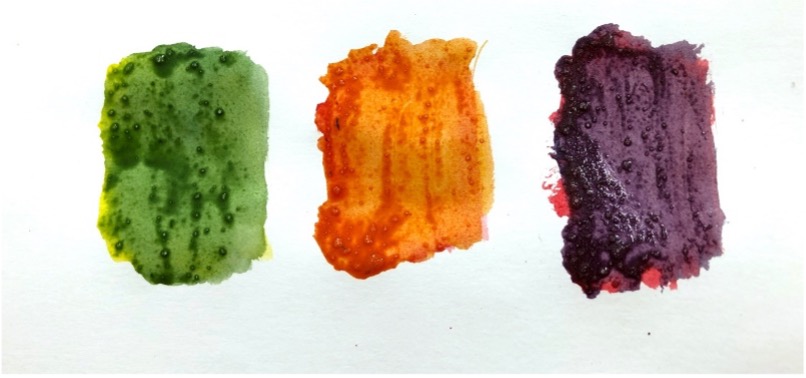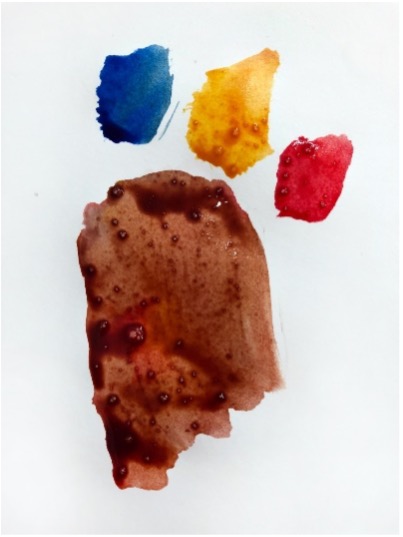Overview
Watercolors
We have learned how to use watercolors to make lines and marks. We have explored different ways to paint and to mix colors. Now we are ready to make a painting using many colors!
Materials and Tools
- Set of watercolors
- Cup of water (use a shallow container with a wide base that won’t spill)
- Paper towel to dry brush
- 9 x 12” or 12 x 18” paper
Activities
Step by Step:
- Open your watercolor set.
- Take out the paintbrush. How should you use or the paint? Remember we need to wake it up!
- Start with water, wake up the blue, then paint a patch of blue on the paper. Let’s make patches of all the primary colors (red, blue and yellow). How can we make each color lighter or darker?

- Now let’s make the new colors (secondary colors: green, orange, purple) How can we make these colors? Use yellow and blue to make green, then yellow and red to make orange, then red and blue to make purple!

- Start with blue. What do we need to add to make this into green? How will you choose to mix the colors?
- Clean the brush by dipping into the water and gently “stir, stir, stir, stop” OR “1,2,3,stop!”
- Let’s try orange. What colors do we need to mix?
- Now let’s try purple. What colors do we need to mix now?
- We can mix them together, put one color next to another so one color spreads into another. Dab dots of color onto wet paper (wet-on-wet).
- And what about brown—how can we mix brown?
- Can you make lines and marks, patches of colors or shapes with these colors? Will they connect and spread into each other? What happens might surprise you! Keep mixing and adding colors to your painting until you feel that you are done!

Prompts for Independent Art Making:
Make as many paintings as you like using all the colors! See how many new colors you can make.
Extensions for lessons:
Try an oil pastel/watercolor resist: On a new piece of paper, make a drawing with lines using your oil pastels. Try using white or yellow. Once you’re done, paint right on top of your drawing using your watercolors. Try using a dark color like blue or purple. What happens when the watercolors cover the oil pastel? The oil “resists” the water and we can still see all the lines!
Artists for Inspiration:


Look at all the colors in these paintings. What colors do you see? How do you think the artist made each color?
Find any places where the paint looks transparent, like you can see through it? Find places where the colors spread and blend into each other? Are there any new colors that you’d like to try to make?

Reflection Questions
- Which colors did you include in your painting?
- Did you mix any new colors?
- How did you add the colors or mix them? Did you blend them, or did they bleed together? Did you use wet-on-wet?
Vocabulary
Primary colors—red, yellow, blue
Secondary colors—green, orange, purple, light/dark, dab, mix/blend, spread, wet-on-wet, transparent
Resources
Books: Beautiful Oops by Barney Saltzberg

